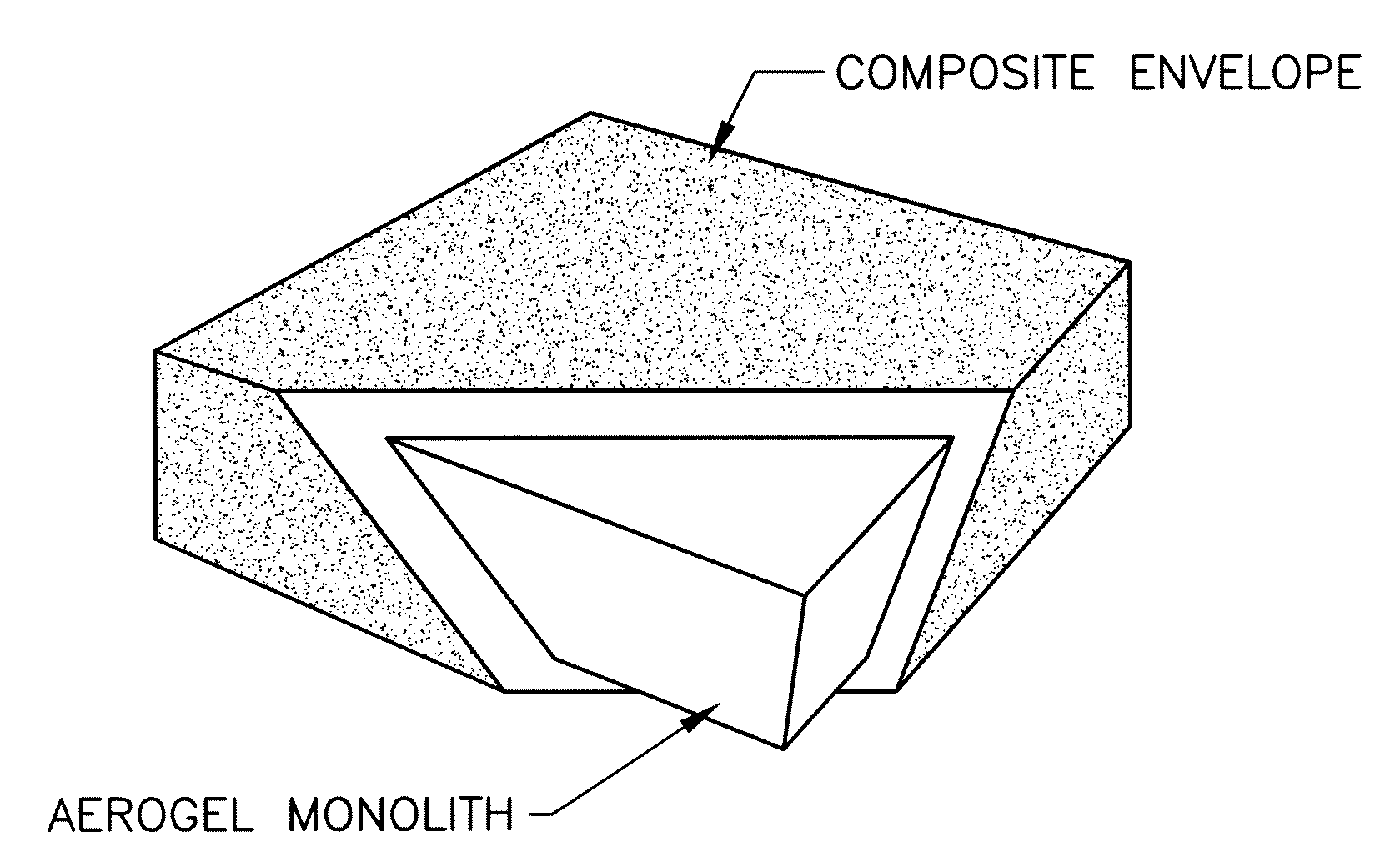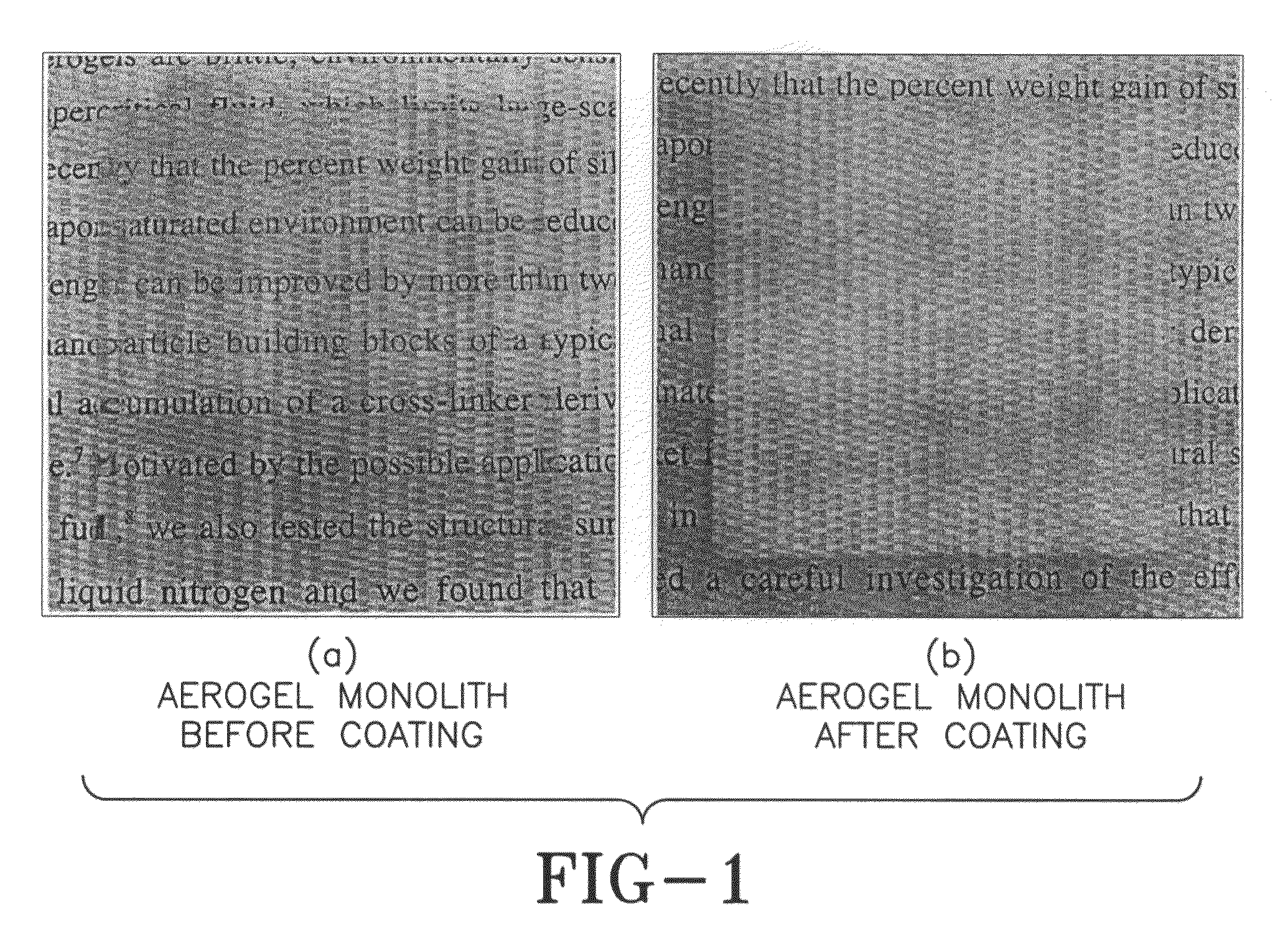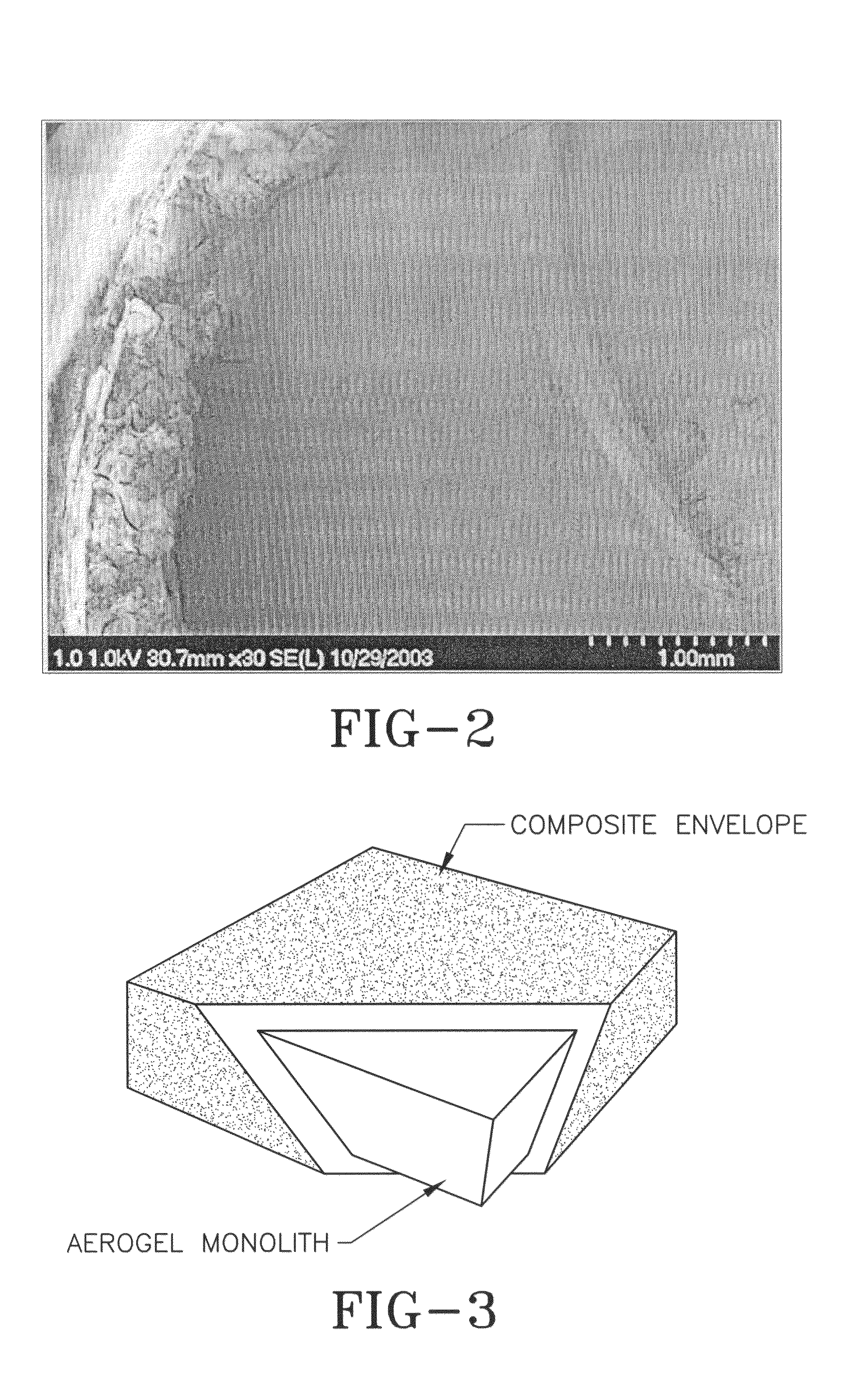Surface modified aerogel monoliths
- Summary
- Abstract
- Description
- Claims
- Application Information
AI Technical Summary
Benefits of technology
Problems solved by technology
Method used
Image
Examples
example 1
Skin Reinforced Native Silica Aerogels with Isocyanate
[0017]A commercially available silica aerogel monolith 2″×2″×0.5″ was manually coated with isocyanates comprising a commercially available viscous mixture of di- and poly-isocyanates (Desmodour N3200A supplied by Bayer Corp.) including the following:
[0018]
[0019]A second layer of isocyanates was applied 12 hours later, and the monolith was left in the open air under ambient conditions to cure. Curing involves: (a) reaction of one of the isocyanate groups with the hydroxyl groups (—OH) on the surface of silica and (b) reaction of the free isocyanate group with moisture from the air. This reaction of the diisocyanate with water leads to hydrolysis to an amine liberating carbon dioxide (CO2). The newly formed amine reacts with more isocyanate to form a hard polymer coating of polyurea on the aerogel monolith. FIG. 1 shows the aerogel monolith before and after it was coated with the isocyanate and cured. The skin reinforced monolith a...
example 2
Skin Reinforced Native Silica Aerogels with Epoxies
[0023]Similar results were obtained by coating the aerogel monolith with a precursor of an epoxie e.g. a liquid precured epoxie glue composition. The two components of the epoxie glue were mixed and heated mildly until a viscous liquid was obtained. That viscous liquid was coated on the surface of cylindrical native silica aerogel samples. Subsequently, the coated samples were placed in an oven at 55° C. until the epoxie precursor coating was completely cured and hardened. The resulting monoliths retained the volume of the original native silica aerogel monolith.
[0024]The chemical compatibility and the speed of reaction between the coatings and the aerogel can be improved, if the silica surface contains amines. This is accomplished, for example, by making aerogels by copolymerization of tetramethoxysilane (TMOS: the classic monomer for making sol-gel silica) and an amine-containing silane such as aminopropyltriethoxysilane (APTES). ...
example 3
Skin Reinforced Native Silica Aerogels with Polyimides
[0025]A silica aerogel monolith 2″×2″×0.5″ made with 25-50% (volume / volume) APTES in TMOS was manually coated on all sides with a viscous THF solution of polyamic acid terminated on either end with a known anhydride such as nadic anhydride. The terminal anhydrides reacted with the amine on the surface of the aerogel. The monolith was allowed to dry overnight and then heated to about 200° C. to cure the polyimide skin as shown by the following reactions:
[0026]
[0027]In the above equation, R1 is a lower alkyl group such as methyl, R2 is hydrogen, x equals 5.0, y equals 39.5 and n equals 3.0.
[0028]Any polyamic-acid terminated with an anhydride will react as long as it is soluble in THF or any other low boiling solvent. Alternatively, any polyamic-acid terminated with an anhydride on one end and a latent reactive endcap on the other such as nadic anhydride as the endcap can be used. Subsequently heating to about 200° C. to imidize the...
PUM
 Login to View More
Login to View More Abstract
Description
Claims
Application Information
 Login to View More
Login to View More - R&D
- Intellectual Property
- Life Sciences
- Materials
- Tech Scout
- Unparalleled Data Quality
- Higher Quality Content
- 60% Fewer Hallucinations
Browse by: Latest US Patents, China's latest patents, Technical Efficacy Thesaurus, Application Domain, Technology Topic, Popular Technical Reports.
© 2025 PatSnap. All rights reserved.Legal|Privacy policy|Modern Slavery Act Transparency Statement|Sitemap|About US| Contact US: help@patsnap.com



